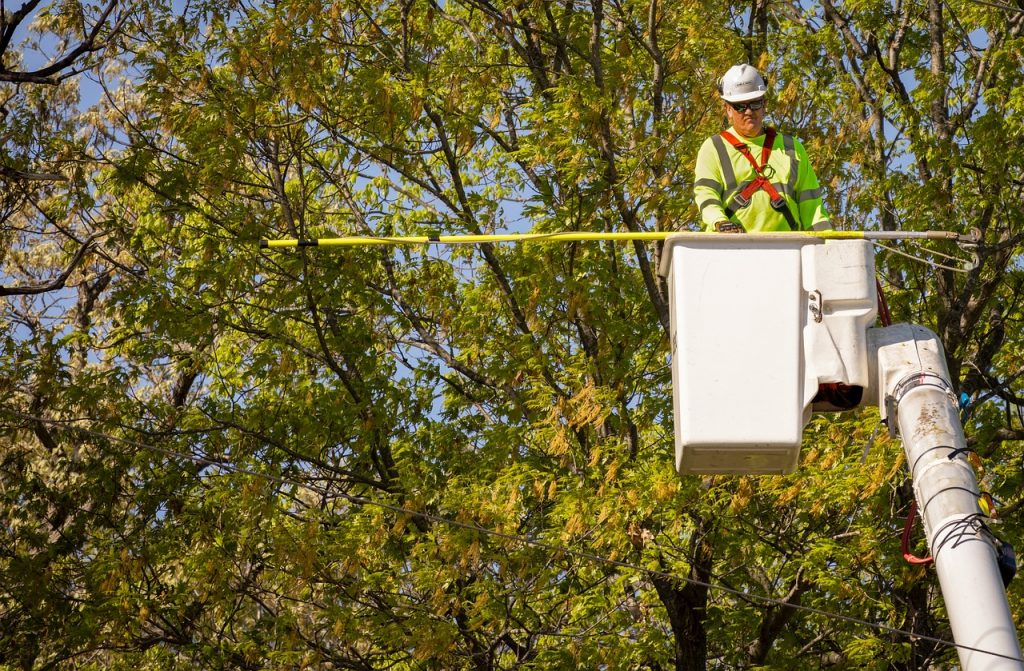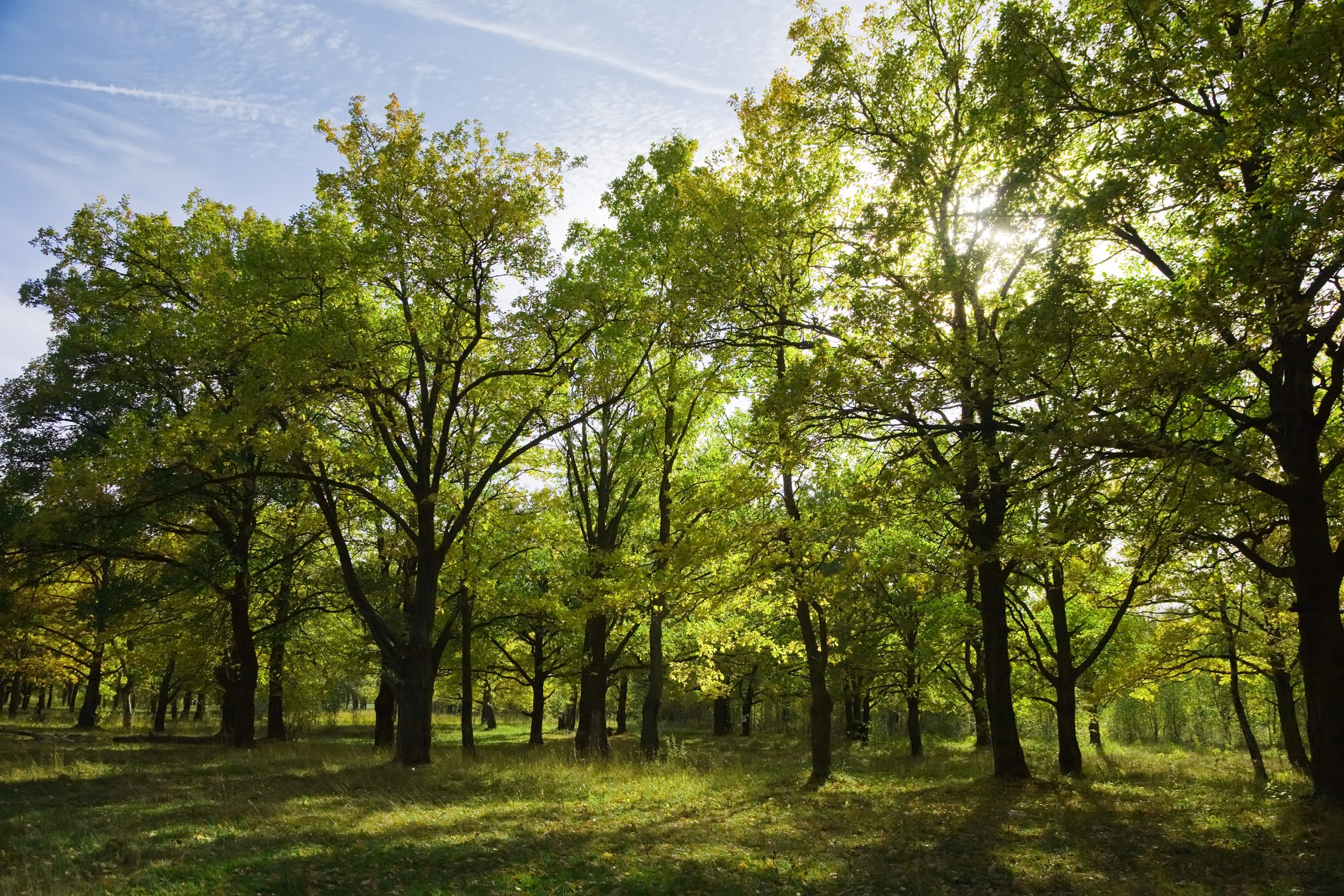How Much Does Emergency Tree Removal Cost
How Much Does Emergency Tree Removal Cost
Are you wondering how much emergency tree removal will set you back? Well, hold on tight because we’re about to dive into the nitty-gritty of it all. Like a seasoned arborist wielding his trusty chainsaw, we’ll guide you through the ins and outs of the cost factors involved. From equipment and labor to the size and location of the tree, we’ll leave no branch unturned. So, sit tight and get ready to learn the ropes of emergency tree removal costs.
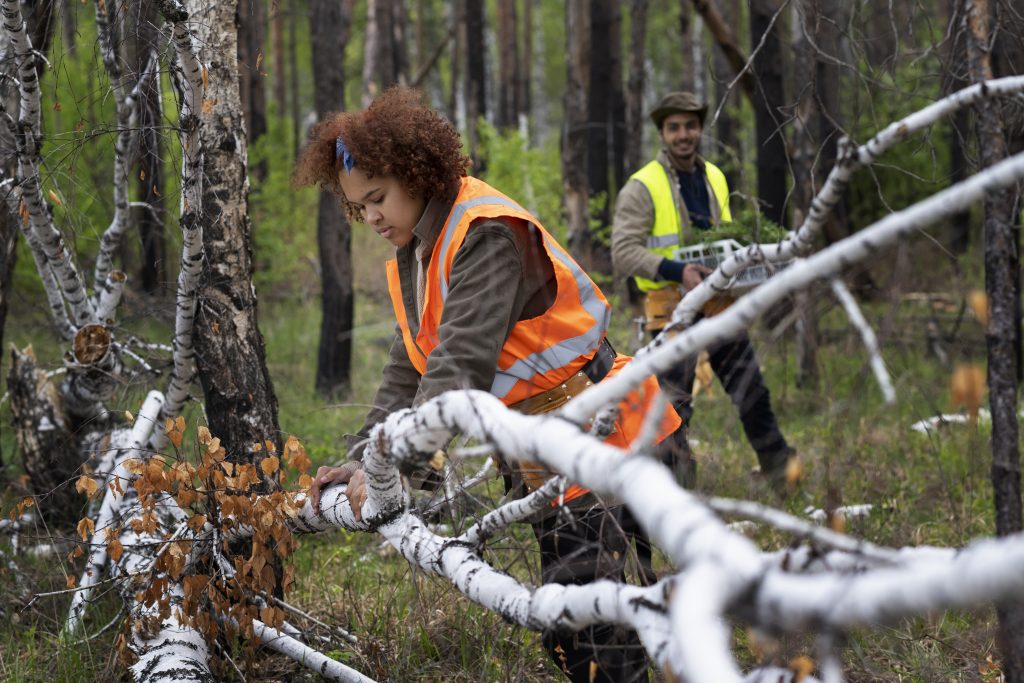
Key Takeaways
- Emergency tree removal costs can vary based on factors such as the size of the tree, its proximity to structures or power lines, and the level of difficulty and obstacles involved.
- Hiring professionals for emergency tree removal ensures proper assessment of cost factors and helps prevent accidents or damage.
- The evolution of tree removal equipment, from manual labor to specialized machinery, has improved safety and efficiency in the industry.
- When considering emergency tree removal, it is important to weigh the pros and cons of hiring professionals versus DIY, taking into account factors such as cost savings, control over the process, physical demands, and the potential for damage or injury.
Introduction to Emergency Tree Removal
If you’re wondering about emergency tree removal costs, it’s important to first understand what it entails. When it comes to tree removal safety, there are several key steps involved in the emergency tree removal process:
- Assessment: The first step in emergency tree removal is assessing the situation. Trained professionals will evaluate the tree’s condition, its proximity to structures or power lines, and any potential hazards.
- Planning: Once the assessment is complete, a plan will be developed to safely remove the tree. This may involve using specialized equipment, such as cranes or bucket trucks, to ensure the tree is removed without causing further damage.
- Execution: With the plan in place, the removal process begins. Trained arborists will carefully cut and remove the tree piece by piece, taking precautions to prevent any accidents or damage.
It’s crucial to hire experienced professionals for emergency tree removal to ensure the safety of both the workers and the surrounding property. Now that you understand the process, let’s delve into the fascinating history of tree removal equipment.
Transitioning seamlessly into the subsequent section, the history of tree removal equipment sheds light on the evolution of techniques and tools used in this important industry.
History of Tree Removal Equipment
The history of tree removal equipment dates back many years. Tree removal techniques have evolved significantly over time, leading to the development of specialized equipment that makes the process safer and more efficient.
In the early days, tree removal was a labor-intensive task that relied heavily on manual labor. People used basic tools like axes and saws to chop down trees and remove the stumps. This method was time-consuming and physically demanding, often requiring a team of workers to complete the job.
As technology advanced, so did the equipment used for tree removal. Chainsaws were introduced in the early 20th century, revolutionizing the industry. With their powerful cutting ability, chainsaws made it easier to fell trees and cut them into manageable pieces.
In recent years, there has been a further evolution in tree removal equipment. Specialized machinery, such as tree spades and cranes, have been designed to safely remove large trees without causing damage to surrounding structures or landscapes. These tools allow for precise control and minimize the risks involved in tree removal.
Understanding the history and evolution of tree removal equipment is important, as it highlights the progress made in ensuring the safety and efficiency of the process. With this knowledge, you can make informed decisions when hiring tree removal professionals and ensure that the right equipment is used for the job.
Now, let’s move on to some tips for effective tree removal.
Tips
When it comes to tree removal, there are several factors that can affect the cost. These factors include the size and location of the tree, the complexity of the job, and any additional services required. Insurance coverage options are also important to consider, as some policies may cover the cost of tree removal in certain circumstances. Lastly, it’s important to weigh the pros and cons of DIY tree removal versus hiring a professional service, as the latter can ensure a safe and efficient removal process.
Factors Affecting Cost
You should consider factors such as the size of the tree, its location, and the level of difficulty involved in the removal when determining the cost of emergency tree removal. These factors play a crucial role in determining the price you will pay for the service. The size of the tree is an important consideration because larger trees require more labor and equipment to remove. The location of the tree also affects the cost, as trees near buildings or power lines may require more careful and intricate removal techniques. Additionally, the level of difficulty involved in the removal, such as the accessibility of the tree and any obstacles in the way, can impact the overall cost. By taking these pricing factors into account, you can get a better understanding of how much emergency tree removal will cost you. Now, let’s delve into the insurance coverage options available to help cover these expenses.
Insurance Coverage Options
Now, let’s explore the insurance coverage options that can help cover these expenses. When it comes to emergency tree removal, the costs can quickly add up. That’s why it’s important to consider insurance options that can help alleviate the financial burden. One option to consider is homeowner’s insurance, which may cover tree removal if the tree falls and damages your property. However, it’s crucial to review your policy carefully, as coverage may vary depending on the circumstances. Another insurance option to consider is liability insurance. This type of coverage can help protect you if a tree on your property falls and damages a neighbor’s property. Before making any decisions, it’s important to weigh the cost considerations and determine which insurance options are best suited for your specific situation. Transitioning into the subsequent section about ‘diy vs professional services‘, it’s important to evaluate the pros and cons of each approach.
DIY Vs Professional Services
To determine the best approach for your situation, it’s important to consider the advantages and disadvantages of tackling the task on your own or hiring professional services. When it comes to DIY tree removal, there are certainly benefits to consider. One major advantage is cost savings. By doing it yourself, you can avoid the expenses associated with hiring professionals. Additionally, you have full control over the process and can complete it on your own timeline. However, there are also cons to DIY tree removal. It can be physically demanding and dangerous, especially if you lack the necessary skills and equipment. Without proper training, you may inadvertently cause damage to your property or injure yourself. It’s essential to weigh these factors before deciding whether to go the DIY route or hire professional services.
Moving on to traits and characteristics…
Traits and Characteristics
Emergency tree removal can be costly due to factors such as tree size, location, and the extent of the damage. When it comes to emergency tree removal, there are certain traits and characteristics you should look for in a professional service. Firstly, experience is crucial. A reputable tree removal company will have years of experience in handling emergency situations and will know how to assess the risks involved. They will also have the necessary equipment to safely and efficiently remove the tree. Additionally, a reliable service will have proper certifications and insurance to protect both you and their workers in case of any accidents or damages. Communication is another important trait to consider. A professional tree removal service will keep you informed throughout the process, providing updates and answering any questions you may have. Finally, look for a company that offers fair and transparent pricing. They should provide you with a detailed estimate beforehand, outlining all the costs involved. By considering these traits and characteristics, you can ensure that you hire a reputable and reliable professional service for your emergency tree removal needs. Now, let’s move on to the steps for emergency tree removal.
Steps for Emergency Tree Removal
When faced with the need for emergency tree removal, you should first assess the safety risks of the situation. This is crucial to ensure the well-being of yourself and others involved. Here are four important steps to follow when carrying out emergency tree removal:
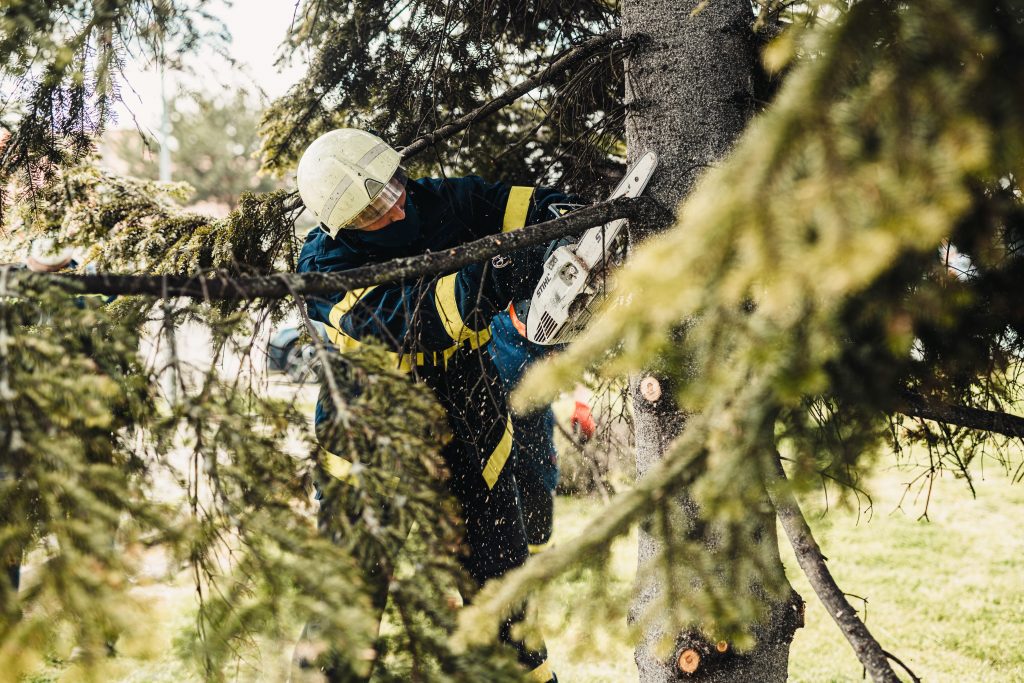
- Evaluate the Surroundings: Take a careful look at the area around the tree. Look for any power lines, structures, or obstacles that could be affected during the removal process. Assessing the surroundings will help you plan the best approach to safely remove the tree.
- Use Proper Safety Equipment: Equip yourself with the necessary safety gear before starting the removal. This includes a hard hat, gloves, safety goggles, and sturdy footwear. Additionally, consider using a harness or safety ropes if the tree is particularly tall or unstable.
- Make Strategic Cuts: Begin by removing any branches that are within reach using a proper pruning saw or chainsaw. Start from the top and work your way down to minimize the risk of injury. Make clean, angled cuts to prevent any damage to the tree or yourself.
- Remove the Tree: Once the branches are removed, carefully cut down the trunk in sections. Use a chainsaw to make precise cuts that allow for easy removal. Take your time and ensure the tree falls in a controlled manner, away from any obstacles or people.
Goals
To achieve successful tree removal, your main goal should be ensuring the safety of yourself, others, and the surrounding area. One important aspect to consider when planning for tree removal is insurance coverage options. Having adequate insurance coverage can provide financial protection in case of any accidents or damages that may occur during the tree removal process. Let’s take a look at the pros and cons of two common insurance coverage options:
| Insurance Coverage Options | Pros | Cons |
|---|---|---|
| Homeowner’s Insurance | – Usually covers tree removal in case of damage or loss caused by a fallen tree. – May offer liability coverage if someone gets injured during the removal process. |
– Policy limits may not be enough to cover the full cost of tree removal. – May require a deductible to be paid before coverage kicks in. |
| Tree Removal Insurance | – Specifically designed to cover the cost of tree removal. – Offers higher coverage limits compared to homeowner’s insurance. |
– Additional expense on top of regular homeowner’s insurance. – May have specific exclusions or limitations on coverage. |
Considering the pros and cons of each insurance coverage option will help you make an informed decision. With insurance coverage in place, you can have peace of mind knowing that any potential accidents or damages will be taken care of. Now, let’s explore some habits for emergency tree removal without delay.
Habits for Emergency Tree Removal
Having a plan in place is crucial for efficient and safe emergency tree removal. When it comes to dealing with dangerous trees, there are a few habits that you should develop to ensure that the process goes smoothly. First and foremost, it is essential to regularly inspect your trees for any signs of instability or decay. Look for cracks in the trunk, leaning, or branches that are hanging low. These are indicators that a tree may pose a risk and should be addressed promptly. Additionally, it is important to maintain the health of your trees by pruning them regularly and removing any dead or diseased branches. This will help to prevent potential hazards during storms or high winds. Furthermore, it is recommended to have a professional arborist assess the situation, as they have the expertise to identify and handle dangerous trees effectively. By developing these habits, you can minimize the risk of accidents and ensure the safety of your property and loved ones.
Now, let’s delve into a real-life story that highlights the importance of these habits for emergency tree removal.
A Real-Life Story
In this real-life story, you’ll see why it’s crucial for you to regularly inspect and maintain your trees for signs of instability or decay. Let’s dive into an experience that highlights the importance of taking proactive measures to prevent emergency tree removal and the cost saving strategies that can be employed.
A homeowner, let’s call him John, neglected the maintenance of his backyard trees for several years. One stormy night, a large branch from his aging oak tree came crashing down onto his roof, causing significant damage. John was left with no choice but to call an emergency tree removal service.
The cost of emergency tree removal can vary depending on various factors such as the size of the tree, accessibility, and the level of danger involved. In John’s case, the cost was exorbitant due to the urgency and complexity of the situation. Had he prioritized regular inspections and maintenance, he could have detected the signs of decay in the tree and taken preventive measures, saving himself from the financial burden of emergency removal.
This real-life experience emphasizes the importance of regularly inspecting and maintaining your trees to avoid costly emergencies. Taking proactive steps like pruning, removing dead branches, and consulting with a professional arborist can help identify potential risks and mitigate them before they become costly disasters.
Now, let’s move on to the next section, where we will explore some quotes from experts in the field regarding the cost of emergency tree removal.
Quotes
Now that you understand the importance of insurance coverage and have heard a real-life story about emergency tree removal, let’s delve into the process of obtaining quotes for this service. When it comes to estimating the cost of emergency tree removal, there are several factors that need to be considered.
Firstly, the size and location of the tree play a significant role in determining the cost. Larger trees or those located in hard-to-reach areas may require specialized equipment or additional manpower, leading to higher prices.
Secondly, the complexity of the job is taken into account. Factors such as the presence of power lines, nearby structures, or obstacles can increase the difficulty level and subsequently impact the cost.
Furthermore, the urgency of the situation may also affect the price. If you require immediate service, you may have to pay a premium for the expedited response.
To ensure you receive accurate cost estimations, it is recommended to contact multiple tree removal companies and request detailed quotes. This will allow you to compare prices, services offered, and warranties provided, enabling you to make an informed decision.
Now that you have an understanding of the quotes and cost estimation process, let’s move on to uncovering some secrets of emergency tree removal.
Secrets
To uncover some secrets about emergency tree removal, you should reach out to experienced professionals in the field and inquire about their expert tips and techniques. When it comes to pricing, there are a few secrets that you should be aware of. One of the secrets of pricing is that it can vary depending on the size and location of the tree. Larger trees that are harder to access may require more specialized equipment and manpower, which can increase the overall cost. Another secret is the presence of hidden costs. These can include additional fees for stump removal, debris disposal, and any necessary permits. It is important to discuss these potential hidden costs with the professionals to get a clear understanding of what is included in the initial quote. By understanding these secrets of pricing and hidden costs, you can make a more informed decision when it comes to emergency tree removal. Now, let’s delve into some insights on emergency tree removal costs.
Insights on Emergency Tree Removal Costs
Understanding the factors that influence pricing for removing trees in an emergency situation can help you make a more informed decision. When it comes to emergency tree removal, there are several key factors to consider. Insurance considerations play a significant role in determining the cost of the service. Some insurance policies may cover the cost of emergency tree removal, while others may not. It is important to review your policy and understand what coverage you have in place.
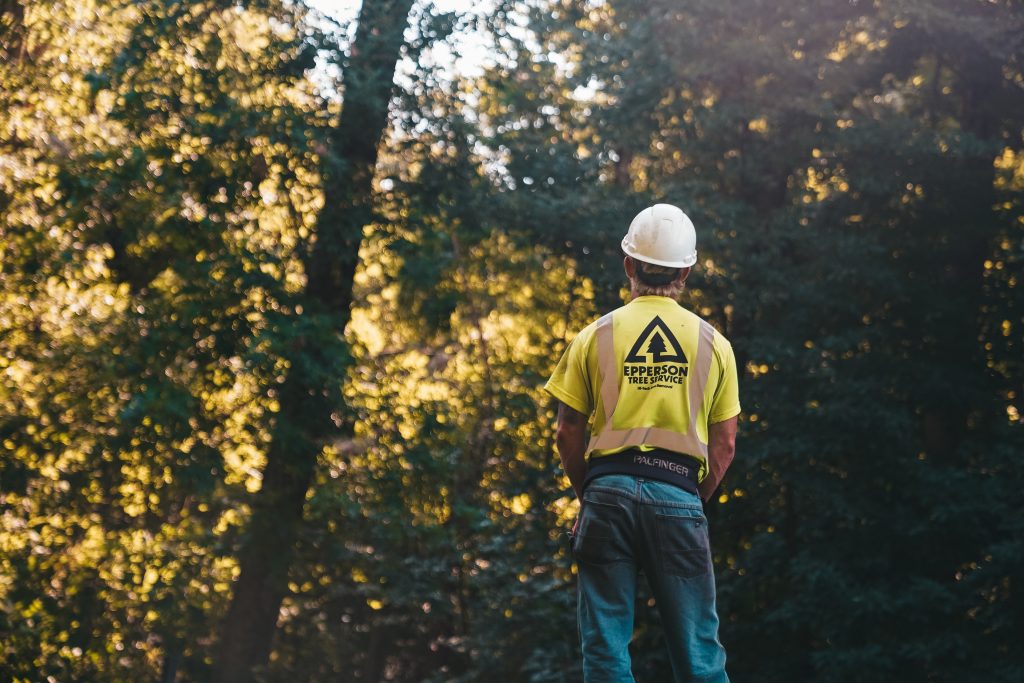
In addition to insurance considerations, there are also cost-saving tips that can help reduce the overall expense of emergency tree removal. One tip is to hire a reputable tree removal company that specializes in emergency services. These companies often have the necessary equipment and expertise to handle challenging situations efficiently, which can save both time and money. Another cost-saving tip is to act quickly. The longer a hazardous tree remains in place, the more dangerous and costly it can become. By addressing the issue promptly, you can potentially prevent further damage and minimize the overall cost of removal.
Benefits of Emergency Tree Removal Costs
Acting quickly to remove a hazardous tree can save time, money, and potentially prevent further damage. When it comes to emergency tree removal, there are several benefits that you should be aware of. One of the main benefits is the preservation of your property. Hazardous trees pose a serious threat to your home and surroundings. By removing them promptly, you reduce the risk of them falling and causing extensive damage to your property. Additionally, emergency tree removal can prevent accidents and injuries. Falling branches or trees can harm people and pets, leading to costly medical bills or even legal issues. By addressing the problem promptly, you ensure the safety of your loved ones and neighbors. Another secret benefit of emergency tree removal is the potential cost savings. Dealing with a hazardous tree before it causes damage can be much more affordable than dealing with the aftermath. By taking action swiftly, you can avoid the costly repairs that may be necessary if the tree were to fall. It is clear that emergency tree removal provides numerous benefits, both in terms of saving money and preventing further damage. By acting quickly, you can protect your property, ensure the safety of those around you, and potentially save on costly repairs. As you consider the benefits, it is important to also learn some valuable lessons about emergency tree removal.
Lessons
When it comes to emergency tree removal costs, there are several factors that can affect the overall price. These factors include the size and location of the tree, the level of difficulty in removing it, and any additional services required, such as stump removal or debris cleanup. It’s important to consider insurance coverage options as well, as some policies may cover the cost of emergency tree removal. While some homeowners may consider DIY options to save money, it’s essential to weigh the risks and potential dangers involved, as well as the expertise and experience required for a safe and efficient removal.
Factors Affecting Cost
To get an accurate estimate for emergency tree removal, you should consider factors like the size of the tree and its location on your property. These factors greatly affect the pricing of the service. Larger trees require more time and effort to remove, which can increase the cost. Additionally, the location of the tree plays a role in determining the price. If the tree is located near power lines or buildings, it may require specialized equipment or techniques, leading to higher costs. On average, the cost of emergency tree removal ranges from $500 to $1500. However, it is important to note that this is just an average cost comparison and prices may vary depending on the specific circumstances. When considering insurance coverage options, it is essential to know what is and isn’t covered to avoid any unexpected expenses.
Insurance Coverage Options
You should consider your insurance coverage options for any unexpected expenses that may arise from damage caused by trees. Having the right insurance coverage can provide you with financial protection in the event of tree-related damage to your property. Most homeowners insurance policies cover tree removal and property damage caused by fallen trees. However, it’s important to review your policy and understand the coverage limits and any exclusions. Some policies may have limitations on the amount they will pay for tree removal or may require you to meet a deductible. To ensure you have adequate coverage, consider adding an endorsement or rider to your policy specifically for tree-related damages. Additionally, there are cost-saving tips you can explore, such as bundling your home and auto insurance policies with the same provider or increasing your deductible to lower your premium. Now, let’s delve into the next section about the pros and cons of DIY tree removal versus hiring professional services.
DIY Vs. Professional Services
There are advantages and disadvantages to doing tree removal yourself versus hiring professional services. If you choose to DIY, it can be a cost-effective option. However, there are several important factors to consider before taking on the task. First, assess the size and complexity of the job. If the tree is small and easily accessible, you may be able to handle it yourself with the right tools and knowledge. DIY tips for tree removal include wearing protective gear, using proper cutting techniques, and ensuring safety precautions. On the other hand, hiring professional services guarantees expertise and efficiency. They have the necessary equipment and experience to handle any tree removal job, including large or hazardous trees. Additionally, professionals can provide a cost comparison and offer advice on the best course of action. Transitioning into the subsequent section about ‘routines {yt}’, it is important to establish a routine for tree maintenance to prevent emergencies in the future.
Routines
Emergency tree removal can disrupt your daily routines. When a tree poses a threat to your property or safety, it becomes necessary to take immediate action. However, this process can interrupt your regular habits and throw off your established routines. Your morning coffee on the patio might have to be enjoyed indoors, and your usual evening stroll through the yard may need to be temporarily avoided. It is important to understand that the removal process may require access to areas of your property that are typically off-limits, such as your backyard or driveway. As a result, you may need to modify your habits and adjust your schedule accordingly. Furthermore, the noise and activity associated with emergency tree removal can be disruptive, making it difficult to concentrate or relax. While the temporary disruptions to your routines may be inconvenient, it is crucial to prioritize your safety and the well-being of your property. Understanding the impact it may have on your daily habits can help you better prepare for the process and minimize any potential inconveniences.
Transitioning into the subsequent section about the pros and cons of emergency tree removal, it is important to weigh the benefits and drawbacks before making a decision.
Pros and Cons
Considering the pros and cons, benefits and challenges can assist in making an informed decision about tree removal. Tree removal can be a necessary step in maintaining the safety and aesthetics of your property. One of the main benefits of tree removal is the elimination of potential hazards. Dead or diseased trees can pose a significant risk to your property and the people around it. Removing them can prevent accidents and property damage. Additionally, tree removal can improve the overall health of your landscape by allowing the remaining trees to receive more sunlight, nutrients, and moisture. However, there are also some challenges to consider. Tree removal can be a complex and potentially dangerous process, requiring the expertise of professionals. It can also be expensive, especially if the tree is large or difficult to access. Environmental impact is another factor to consider, as trees play a vital role in the ecosystem. In summary, while there are clear benefits to tree removal, it is important to weigh them against the challenges before making a decision.
When it comes to tree removal, there are certain dos and don’ts to keep in mind.
Dos and Dont’s
When it comes to tree removal, it’s important to follow certain dos and don’ts to ensure a safe and effective process. To help you navigate this task, here are some key guidelines to keep in mind.
Do’s
- Assess the situation: Before starting any tree removal, evaluate the tree’s condition, proximity to structures, and potential hazards.
- Plan the process: Develop a strategy for the removal, considering factors like equipment needed, safety measures, and permits if required.
- Use proper tools: Make sure to have the necessary tools and equipment for the job, such as chainsaws, safety gear, and ropes.
- Consider professional help: For larger or more complex tree removals, it’s best to hire a certified arborist or tree removal service. They have the expertise and equipment to handle the job safely and efficiently.
Don’ts
- Attempt it alone: Tree removal can be dangerous, especially for large trees or those near power lines. Always have someone else present for assistance or consider hiring professionals.
- Ignore safety precautions: Wear appropriate protective gear, including gloves, goggles, and a hard hat. Also, ensure the work area is clear of bystanders and pets.
- Cut without a plan: Randomly cutting branches or sections of a tree can lead to accidents and damage to property. Have a clear plan and follow it systematically.
- Forget about permits: Check with your local authorities to determine if you need any permits for tree removal. Failing to do so can result in fines or legal issues.
Mistakes to Avoid
One common mistake to avoid during tree removal is not properly assessing the condition of the tree and its proximity to structures. This can lead to costly damages and accidents. Before starting the removal process, it is crucial to examine the tree for signs of decay, disease, or structural weakness. Additionally, consider how close the tree is to buildings, power lines, or other valuable assets. Failing to do so may result in unexpected expenses and potential danger.
Another mistake to avoid is attempting to remove the tree by yourself without the necessary skills and equipment. Tree removal is a complex task that requires professional expertise. Without proper training and tools, you risk causing further damage to your property or injuring yourself. Hiring a professional tree removal service may seem like an additional cost, but it can save you money in the long run by preventing accidents and property damage.
Lastly, failing to obtain the required permits and permissions can lead to legal issues and fines. Depending on your location, there may be specific regulations regarding tree removal. It is essential to check with your local authorities and obtain the necessary permits before proceeding with the removal process.
Key Takeaways
To ensure a successful and safe operation, make sure to assess the condition of the tree, its proximity to structures, and obtain the necessary permits before proceeding. When it comes to emergency tree removal, it is important to consider insurance coverage and weigh the pros and cons of doing it yourself versus hiring a professional.
Insurance coverage is crucial when it comes to emergency tree removal. Before attempting any removal, check with your insurance provider to see if they cover such costs. Some policies may include coverage for tree removal in case of emergencies, while others may not. Understanding your insurance coverage will help you plan and budget accordingly.
When faced with the decision of DIY versus professional tree removal, it is important to consider the risks and complexities involved. While DIY may seem cost-effective, it can be dangerous and may result in property damage or personal injury. Professionals have the necessary skills, experience, and equipment to safely remove the tree and mitigate any potential risks.
In the next section, we will discuss specific action steps for emergency tree removal costs, including how to assess the urgency of the situation and obtain accurate cost estimates. Transitioning into this, it is important to have a clear understanding of the potential risks and the importance of proper insurance coverage before proceeding with any removal.
Specific Action Steps for Emergency Tree Removal Costs
When it comes to emergency tree removal costs, there are several factors that can affect the overall price. These factors include the size and location of the tree, the complexity of the removal process, and any additional services required, such as stump grinding or debris cleanup. It’s important to consider insurance coverage options and whether or not emergency tree removal is covered under your policy. Additionally, it’s recommended to compare different service providers to ensure you are getting the best value for your money and the highest quality of service.
Factors Affecting Cost
If you want to determine the cost of emergency tree removal, you should consider various factors that can affect the overall price. There are several factors influencing the pricing of emergency tree removal services. The first factor to consider is the size and height of the tree. Larger and taller trees require more equipment and manpower to remove, which can increase the cost. The location of the tree is another pricing factor. If the tree is located in a hard-to-reach area or near power lines, it may require specialized equipment and techniques, leading to higher costs. Additionally, the condition of the tree plays a role in determining the price. If the tree is diseased, damaged, or unstable, it may require extra precautions or additional services, impacting the overall cost. Other factors that can influence the price include the time of day or week when the emergency occurs and the urgency of the situation. By considering these pricing factors, you can better understand the cost of emergency tree removal. Now, let’s discuss insurance coverage options.
Insurance Coverage Options
Insurance coverage options can help alleviate the financial burden associated with unexpected tree-related incidents. When it comes to emergency tree removal, having the right insurance coverage can make all the difference. It is important to review your homeowner’s insurance policy to understand what is covered and what is not. Some policies may provide coverage for tree removal if the tree falls on your property due to a covered peril, such as a storm or wind damage. Additionally, there are specialized insurance policies available that specifically cover tree removal. These policies can provide coverage for tree removal, as well as other related expenses, such as debris removal and damage to structures caused by fallen trees. By exploring your insurance coverage options, you can save on the cost of emergency tree removal and minimize the financial impact.
When it comes to comparing different service providers for emergency tree removal, there are several factors to consider.
Comparing Different Service Providers
Comparing different service providers for emergency tree removal can help you find the most reliable and affordable option. When it comes to handling emergencies, you need a company that responds quickly and efficiently. Start by comparing prices. Contact several service providers and ask for quotes. This will give you an idea of the average cost in your area. However, don’t solely rely on price as the determining factor. Customer reviews play a crucial role in finding the right company. Look for testimonials from previous clients to get an understanding of their experiences. Positive reviews indicate reliable and efficient service. Take the time to research and compare different service providers to ensure you make the best choice for your emergency tree removal needs.
Frequently Asked Questions
How Long Does It Typically Take to Complete an Emergency Tree Removal?
On average, emergency tree removal can take anywhere from a few hours to a full day, depending on the size and complexity of the job. Specialized equipment, such as chainsaws and cranes, may be required to expedite the process.
Are There Any Permits or Regulations That Need to Be Considered Before Removing a Tree in an Emergency Situation?
Before removing a tree in an emergency situation, it is important to consider permits and regulations. Make sure to check with local authorities for any requirements. Also, confirm if your insurance coverage includes emergency tree removal.
Can Homeowners Insurance Cover the Cost of Emergency Tree Removal?
Homeowners insurance coverage varies, but it can potentially cover the cost of emergency tree removal. It’s important to review your policy and contact your insurance provider to understand the specifics and find affordable options.
Are There Any Specific Factors That Can Affect the Cost of Emergency Tree Removal?
Factors such as the size and location of the tree, accessibility, and additional services required can affect the cost of emergency tree removal. To minimize expenses, consider regular tree maintenance and addressing potential hazards before they become emergencies.
Is It Possible to Negotiate the Cost of Emergency Tree Removal With a Professional Tree Removal Company?
When dealing with emergency tree removal, it is possible to negotiate the cost with a professional tree removal company. Discuss your situation and budget with them to see if they can accommodate you.
About Murray, Utah
Murray is a city situated on the Wasatch Front in the core of Salt Lake Valley in the U.S. state of Utah. Named for territorial governor Eli Murray, it is the state's fourteenth largest city. According to the 2020 census, Murray had a population of 50,637. Murray shares borders with Taylorsville, Holladay, South Salt Lake and West Jordan, Utah. Once teeming with heavy industry, Murray's industrial sector now has little trace and has been replaced by major mercantile sectors. Known for its central location in Salt Lake County, Murray has been called the Hub of Salt Lake County. Unlike most of its neighboring communities, Murray operates its own police, fire, power, water, library, and parks and recreation departments and has its own school district. While maintaining many of its own services, Murray has one of the lowest city tax rates in the state.
Neighborhoods in Murray, Utah
Murray Oakes, Grant Park, Southwood Park, Murray Park, Murray Park Restrooms, Willow Pond Park, Neighborhood Veterinary Care
Things To Do in Murray, Utah
Bus Stops in Murray, Utah to Truco Services, Inc.
Bus Stop in Murray Central Station (Bay C) Murray, Utah to Truco Services, Inc.
Bus Stop in State St @ 4801 S Murray, Utah to Truco Services, Inc.
Bus Stop in Murray North Station Murray, Utah to Truco Services, Inc.
Bus Stop in State St @ 4949 S Murray, Utah to Truco Services, Inc.
Bus Stop in Murray Central Frontrunner/Trax Station Murray, Utah to Truco Services, Inc.
Bus Stop in Murray Blvd / Vine St (SB) Murray, Utah to Truco Services, Inc.
Bus Stop in State St @ 3925 S Murray, Utah to Truco Services, Inc.
Bus Stop in State St @ 4824 S Murray, Utah to Truco Services, Inc.
Bus Stop in State St @ 5223 S Murray, Utah to Truco Services, Inc.
Bus Stop in Murray Blvd / Allendale Dr (NB) Murray, Utah to Truco Services, Inc.
Bus Stop in Murray Blvd @ 5039 S Murray, Utah to Truco Services, Inc.
Bus Stop in State St @ 4721 S Murray, Utah to Truco Services, Inc.
Driving Directions in Murray, Utah to Truco Services, Inc.
Driving Directions from Woodruff Tree Trimming and Removal to 4640 Commerce Dr, Murray, UT 84107, USA
Driving Directions from Reliable Tree Care to 4640 Commerce Dr, Murray, UT 84107, USA
Driving Directions from Tree Pro-Tech to 4640 Commerce Dr, Murray, UT 84107, USA
Driving Directions from Prestige Tree And Landscape to 4640 Commerce Dr, Murray, UT 84107, USA
Driving Directions from Excellence Tree & Landscape to 4640 Commerce Dr, Murray, UT 84107, USA
Driving Directions from Amen Trees to 4640 Commerce Dr, Murray, UT 84107, USA
Driving Directions from Tim's Tree Care to 4640 Commerce Dr, Murray, UT 84107, USA
Driving Directions from Jordan Tree Service - Murray to 4640 Commerce Dr, Murray, UT 84107, USA
Driving Directions from Arbor Works to 4640 Commerce Dr, Murray, UT 84107, USA
Driving Directions from Diamond Tree Experts to 4640 Commerce Dr, Murray, UT 84107, USA
Driving Directions from Green Tree Arborist to 4640 Commerce Dr, Murray, UT 84107, USA
Driving Directions from TruCo Services to 4640 Commerce Dr, Murray, UT 84107, USA
Reviews for Truco Services, Inc. Murray, Utah
Emily Abercrombie
We had a great experience with TruCo! They were well priced, responsive and prompt. Michael was a pleasure to work with and gave us advice on which plants to put in where we took out our ugly old shrubs. I would highly recommend this company!!!
Michelle Turpin
TruCo Services gets 5 stars from us for customer service. We experienced a few issues with their services this last year and Rob Eccles in senior management, stepped in and immediately handled our issues. He was very committed to making sure they understood our expectations and would execute to make us happy.
Siobhan Billingsley
I work for a property management company and have the pleasure of working with Rob at a community in Sandy. He has been incredible to work with and always responds in a timely manner. He knows all the homeowners by name and address and is aware of all the "problem" areas when it comes to sprinklers. I never have to worry about following up with him because he always reaches out to provide me with an update. If you're looking to work with someone who takes pride in their job, is professional, and can solve the worst landscaping problems thrown your way, Rob is your guy. Thank you, Rob for all you do!
Jaime S.
We have used Truco at 2 of the complexes we manage, they have been great to work with. Good quality service, outstanding customer service with good communication. That's hard to find these days. I highly recommend them. Travis has been awesome to work with.
Jerusha Smart
We use TruCo for a majority of our properties and our home. While other landscaping companies we use come and go for various reasons like cost, communication issues, work performance, etc., TruCo is always consistent in price and work. Also, Rob is the best.





